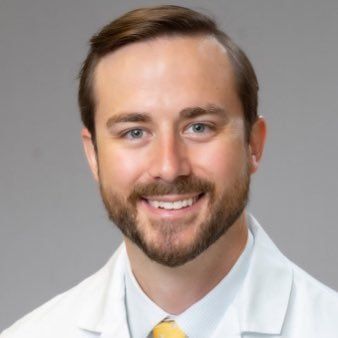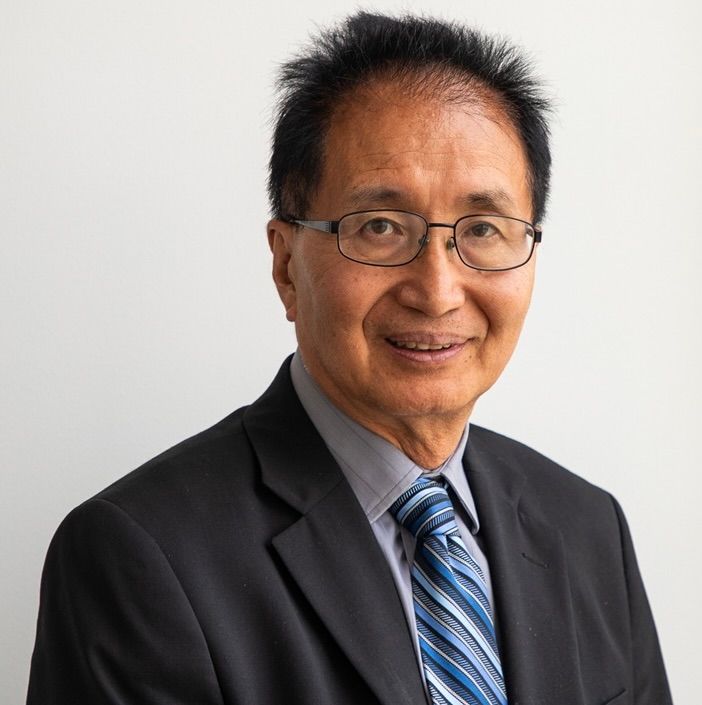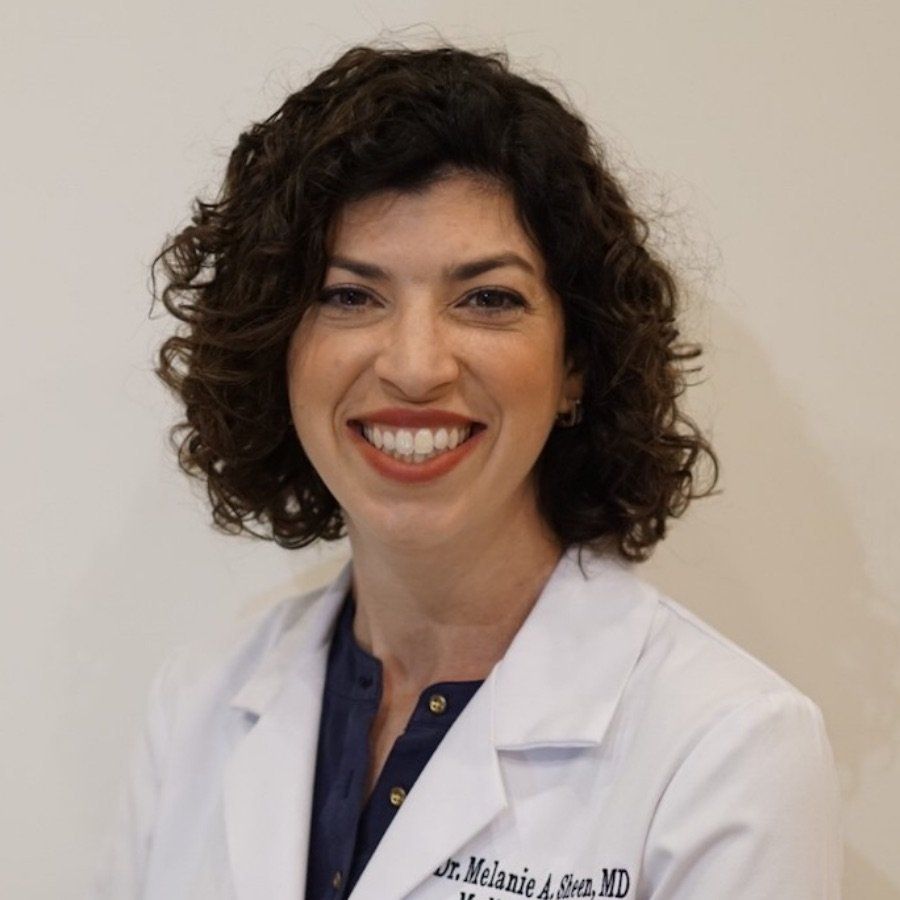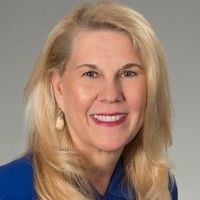- Center on Health Equity & Access
- Clinical
- Health Care Cost
- Health Care Delivery
- Insurance
- Policy
- Technology
- Value-Based Care
Louisiana Delivers Innovative Cancer Treatments, but Ensuring Access Is a Work in Progress
Medicaid expansion has enhanced cancer care in Louisiana, boosting access to treatments like CAR T-cell therapy and improving breast cancer screening initiatives.
Nearly a decade after Medicaid expansion took hold in Louisiana, it is seen as a net positive in cancer care in one of the country’s poorest states.1 Studies have linked the 2016 expansion to a rise in treatment for colon cancer in the state,2 as well as increased screening for breast cancer, which has shortened the time to diagnosis.3
Alongside Medicaid expansion, the past decade has brought a rapid rise in the types of cancer treatment offered in Louisiana and in clinicians’ reach across the state. New Orleans and its immediate suburbs are home to the state’s medical schools and to Ochsner Health, which now operates 46 hospitals and 370 health centers statewide.4 Two years ago, then-Gov. John Bel Edwards launched efforts to bring a National Cancer Institute (NCI)-designed cancer center to the state, through a collaboration that includes LSU Health Sciences Center, LCMC Health, Tulane University, and the Louisiana Cancer Research Center (LCRC).5
Still, Medicaid expansion is not a panacea for creating access to care. At a November 4, 2025, meeting of the Institute for Value-Based Medicine® held in downtown New Orleans, panelists from across the region explained that while Medicaid has expanded access for many, reduced reimbursement levels mean that some oncology providers may limit the number of patients with Medicaid they treat. As one panel discussed, expiring subsidies, along with changes coming under the One Big Beautiful Bill Act, could undo some of the progress seen over the past decade.6
CAR T-Cell Therapy, Bispecifics, and More
Chimeric antigen receptor (CAR) T-cell therapy for adults started in Louisiana a little over 2 years ago,7 panelists discussed during “Advances in Care and Access in Hematology.” Since June 2023, Ochsner’s relationship with The University of Texas MD Anderson Cancer Center has created new opportunities for collaboration and access to clinical trials.8 Over the past decade, Clark Alsfeld, MD, a hematologist/oncologist with Ochsner MD Anderson Cancer Center, said he’s changed his approach to treating patients with acute myeloid leukemia, as 12 new therapies have reached the market since 2017.9
Clark Alsfeld, MD | Image Credit: © Ochsner MD Anderson Cancer Center

Carter T. Davis, MD, an Ochsner medical oncologist/hematologist who led the discussion, said coverage challenges with CAR T-cell therapy can overlook its benefits. “What I think is really striking about that is CAR T-cell therapy really is cost effective, even compared with a lot of other therapies that may be indefinite or at least long term in their duration,” Davis said. “The scrutiny that (CAR T therapies) receive in getting authorized to be delivered to patients actually limits access. So, we know for a fact that far fewer people are actually getting CAR T therapy than who are eligible based on their disease—this is well recognized, not just within Louisiana, but also nationally.”
Carter T. Davis, MD | Image Credit: © Ochsner Health

Shou-Ching Tang, MD, PhD, FACP, FRCPC, who serves as associate dean for translational research at LSU Health and associate director for clinical research at LCRC, views reimbursement for CAR T differently.
Shou-Ching Tang, MD, PhD, FACP, FRCPC | Image Credit: © LSU Health

“We should look at the issue in 2 ways,” said Tang. First, there is some coverage, he said, and second, there is basic access—in contrast to the situation he faced previously at the University of Mississippi, which lacked Medicaid expansion. “I'm glad that in Louisiana, it's covered now.”
Research in the pipeline could deliver “off-the-shelf” CAR T-cell therapy, Tang said. “That way, we can bring down the cost as well as improve patient access.”
The COVID-19 pandemic hit hard here, faculty members said. However, according to Donald Chancellor, MD, an assistant professor of hematology and medical oncology at Tulane School of Medicine, the disruption also forced oncologists to push beyond their comfort zone with telehealth. The care delivery model is forever changed.
Alsfeld described how telehealth has revolutionized the way he sees patients, many of whom can be managed remotely—greatly improving their quality of life. “I joke with my wife that I'm in 20 different cities across Louisiana throughout the day on a regular basis, because I am seeing people virtually wherever they are—and partnering with their community oncologist to help me deliver that care and provide a leukemia-focused attention on their care.”
Bispecific antibodies, which do not require customized T-cell collection as CAR T-cell therapies do, have made more headway in community oncology, and in some cases, the treatment plan is designed to be outpatient from the start. But Alsfeld noted that FDA’s recent changes to Risk Evaluation and Management Strategy (REMS) requirements10 could make CAR T more competitive with bispecific antibodies, and patient preferences will have a larger role in treatment choice.
Panelists credited the $2000 annual cap on out-of-pocket costs for Medicare Part D, a feature of the Inflation Reduction Act, with boosting access to oral therapies.11 These include second-generation Bruton tyrosine kinase inhibitors in chronic lymphocytic leukemia. Davis credited the National Comprehensive Cancer Network guidelines with helping patients avoid denials and step therapy, although prior authorization can still cause delays.
On the financial side, Chancellor said, “Thank goodness for our social workers—they really have filled the gaps.” He practices at University Medical Center, known as UMC, which he said has a team that explores options for patients to receive various therapies. UMC is a 2.3 million-square-foot facility built in the heart of New Orleans’ medical corridor to replace the former Charity Hospital in the aftermath of Hurricane Katrina; it opened in 2015.12
Partnerships Are Key to Advancing Breast Cancer Care
Having clinical trials is important, but having true partnerships and collaboration has taken breast cancer care to a new level in the Greater New Orleans area, according to panelists taking part in the discussion, “Innovations in Breast Cancer: Screening, Treatment, and Clinical Trials.”
Melanie Sheen, MD, breast medical oncologist at Ochsner MD Anderson; Michelle Loch, MD, associate professor of Clinical Medicine at LSU Health Sciences Center; and Tang discussed how the rise in clinical trials has not only given patients access to novel therapies but also promoted access to comprehensive care. Loch said access to genetic testing access has greatly improved—a 2022 state law greatly expanded access to genetic and molecular testing, including next-generation sequencing (NGS) in some circumstances.13
Michelle Loch, MD | Image Credit: © LSU Health Sciences Center

“I remember a time when genetic testing wasn't available, and so we had to get creative on who we would conduct genetic testing for,” she said, noting that the changes have impacted both medical and surgical approaches. “I've been here for 15 years, so I've seen an interesting evolution.”
Loch highlighted UMC’s unique position as “the next generation of charity,” offering patients who rely on Medicaid access to phase 1 trials.
Tang praised the collegial relationships between institutions, stating that these involve “not only the partnership between us and the sponsor, but the partnership between different organizations, among physicians,” focused primarily on patient care rather than competition. Sheen agreed, explaining that “We're all part of the same Louisiana Cancer Research Consortium,” which gives patients across Louisiana and the Mississippi Gulf Coast access to clinical trials typically only available at NCI-designated centers.
Melanie Sheen, MD | Image Credit: © Ochsner MD Anderson Cancer Center

“I do find that we work very well together—like it's not a competitive phase 1 program; it’s collaborative,” Sheen said. Physicians are aware of trials that have opened at different institutions across the city, and they regularly refer patients to each other, based on what the patient needs.
Loch discussed initiatives to continue to raise breast cancer screening rates. “There’s a lot of boots on the ground, a lot of community work to put the word out about screenings and having access to screening,” followed by additional work to make it easier to connect patients with care if a screening is abnormal. LSU Health’s School of Public Health has dedicated navigators, she said, and community engagement efforts aim to spread awareness about these initiatives.
Although advocacy efforts have greatly improved access to testing generally and to NGS, Tang said some gaps remain; panelists discussed the challenges they face with rising numbers of younger patients who may be covered by employer-based ERISA plans that are not required to follow new state laws.
Advocacy Contributes to Pharmacy’s Critical Role
In the discussion, “Pharmacy Access and Decision Making in Oncology,” leaders from Ochsner Health and Xavier University College of Pharmacy addressed how pharmacists support the complex cancer care delivery system in Louisiana. That system is poised to expand as Ochsner and Xavier, the nation’s only Catholic historically Black college or university, are collaborating to open a new medical school in 2027.14 Each panelist explained her role:
Deborah Simonson, PharmD, system vice president and chief pharmacy officer at Ochsner Health, outlined her work to ensure that the infrastructure is in place to cover medications, so that the health system can deliver the right therapies to the right patients.
Sheena Babin, PharmD, CSP, who leads Ochsner’s specialty pharmacy team, said their focus is on complex self-administered outpatient products. “We do everything from start to finish, to really hold the patient’s hands from beginning to end,” starting with prior authorization, through setup, financial assistance, and drug monitoring.
Jasmine Eugene, PharmD, a clinical assistant professor at Xavier and clinical oncology pharmacist, practices at UMC in the infusion center, working with intravenous medications.
Deborah Simonson, PharmD | Image Credit: © Ochsner Health

Babin and Simonson described the collaborative nature of the work across multidisciplinary care teams. “As you know, the therapies have become much more complex,” Simonson said. “And the more complex they are, the more that our pharmacy team helps support our providers and our nurses.”
The arrival of CAR T-cell therapy at Ochsner, for example, called on pharmacists “to really think all of this out way in advance,” she said, including building everything into the electronic medical record—because then it’s standardized. “Everyone knows the regimens and knows how to treat the side effects,” Simonson said. “And we can do that anywhere now.”
And that’s just inpatient. Babin’s team handles appropriateness on the outpatient side, ensuring that oral agents go to the right patients. “The education of the patient that is very robust,” Babin said, and the pharmacist is very involved in helping manage adverse effects up front.
“Education is so important to the patient, so that they know what to expect before they start taking [the drug] so that they know what to expect. They're not surprised by it. They know how to manage it,” she said. A pharmacist is on call 24/7, and remote pharmacists are available for patient consults.
The role of oncology pharmacists in support of physicians has expanded greatly, so much so that finding enough oncology pharmacists has become its own challenge. Simonson discussed how remote oncology pharmacy teams, assisted with artificial intelligence (AI), work through prior authorization via the electronic medical record on the physicians’ behalf, freeing up their time for patient care. However, this system requires a sufficient number of oncology pharmacy staff.
Jasmine Eugene, PharmD | Image Credit: © Xavier University College of Pharmacy

Eugene said that’s where pharmacy education is critical. Pharmacy students are eager to learn how to help patients with cancer, but understandably nervous. “I train them to not only know how to work up a patient,” she said, “but to think ahead of what the patient may need. So essentially, [when] my patients get a new diagnosis, we have to essentially think about what types of treatments will they need.”
Pharmacy students, Eugene said, learn to “take into consideration the patient factors, whether it’s comorbidities, whether it’s the driving, the distance they have to come every time.”
She noted the challenge of workforce shortages: “This is not just a Louisiana shortage; it's a national shortage.”
All 3 panelists cheered Louisiana for passing legislation on “white bagging,” which prevents payers from requiring hospitals to obtain chemotherapy from external pharmacies.15 Simonson shared that most of her colleagues from around the country still lack this legislation. Additional victories include mandated coverage for pharmacogenomic testing and protections against excluding specialty medications from formularies.
Breaking Down Barriers to Clinical Trials
Local oncologists still hear from patients who think being in a clinical trial means they are a “guinea pig.” There are problems with transportation, and bigger problems with trust. The legacy of the HeLa cells and the Tuskegee syphilis study still hangs in the air when Black patients are asked about taking part in a trial evaluating a new cancer therapy, one that might save their life.
This is the reality that oncologists and practice leaders encounter, according to panelists in the final discussion, “No Outcome Without Access: Rewriting the Rules of Equity in Cancer Care.” Moderated by Kathy Oubre, MS, CEO of Pontchartrain Cancer Center, the panel featured Loch, Lingling Du, MD, a gastrointestinal medical oncologist from Ochsner MD Anderson; and Stefan C. Grant, MD, JD, MBA, who is section chief, Hematology and Medical Oncology in the John W. Deming Department of Medicine at Tulane University.
The panelists confirmed they are seeing more younger patients with cancer. Loch noted that many young patients with breast cancer are “presenting before access to screening at the age of 40,” often without health insurance or access to NGS. Du reported a “very sharp increase” in colorectal cancer (CRC) among patients in their 30s and 40s; although the CRC screening age was recently lowered to 45, Du wondered if it should be even lower.
Grant highlighted regional factors that contribute to early cancers. “We see an epidemic of obesity, and we know that obesity is associated with certain cancers, like breast cancer,” he said. “We know alcohol is associated with certain cancers, and there's a lot of alcohol consumption here.”
Kathy Oubre, MS | Image Credit: © Pontchartrain Cancer Center

Although it would be ideal for these younger patients to join in clinical trials, getting them to engage in their health is easier said than done, Oubre said. “How do you get the message out to those younger patients?” she asked.
The panelists conceded it’s not easy. “Barriers to participation in clinical trials are very similar to the barriers to health care in general,” Grant said. Using community health workers and forming partnerships helps; in New Orleans, a collaboration with the local Saints of the National Football League—a huge fixture in the city—helps promote prostate cancer screening.
Loch stressed that “underrepresented patients who are offered clinical trials accept clinical trials to the same degree that standard patients do,” dispelling the myth that minority patients refuse participation, an experience that is consistent with national data (citation). The key, she said, is having conversations and “not just having a bias as a provider.”
Rural patients in particular struggle with transportation, although Du said the American Cancer Society helps fill these gaps in Louisiana. Loch said trial sponsors must incorporate support into trial budgets, especially for “young women who have children, who are single parents.” Finding the right balance of support is challenging for trial participants who must travel far to the site, as Institutional Review Boards have strict rules about compensation. Yet being part of a trial may require significant time away from work.
Oubre raised a provocative question at the end of the session: with insurance subsidies under the Affordable Care Act (ACA) due to expire,6 how will institutions cover trial costs, such as laboratory testing, that might have been covered by a patient’s insurance? What can be done for these patients who are midway through a trial and may not be able to afford their coverage in 2026? (At press time, there were discussions that Congress may grant an extension to ACA subsidies before the end of 2025.)
“I think that’s going to be catastrophic,” Grant said. He anticipated having to negotiate this issue with sponsors, because typically they do not allow different treatment for insured and uninsured patients. Thus, if a patient suddenly had higher out-of-pocket costs, “the sponsor will have to pick up more of the costs, because that's equity,” he said. “That will unfortunately slow progress of clinical research, because these, these are very expensive undertakings. So, I’m hoping that this won’t come to full fruition.”
Loch agreed the loss of ACA subsidies “would be very problematic, and I think it keeps most of us in health care up thinking about it,” she said. “Not just from an oncology perspective or a clinical trial perspective, but also from a health care perspective in general—especially in Louisiana, where patients are specifically vulnerable.”
References
- Kronenberg A. States with the highest poverty rates. US News and World Report. May 6, 2025. Accessed November 18, 2025. https://www.usnews.com/news/best-states/slideshows/us-states-with-the-highest-poverty-rates
- Lyons JM, Danos DM, Maniscalco LS, et al. Medicaid expansion increases treatment for patients with colon cancer. Cancers (Basel). 2025;17(2):207. doi:10.3390/cancers17020207
- Chu QD, Li T, Hsieh MC, et al. Positive impact of the Patient Protection and Affordable Care Act Medicaid expansion on Louisiana women with breast cancer. Cancer. 2021;127(5):688-699. doi:10.1002/cncr.33265
- About Ochsner. Ochsner Health. Accessed November 18, 2025. https://www.ochsner.org/about-ochsner/
- Governor Edwards announces statewide collaboration in pursuit of NCI designation. Louisiana Cancer Research Center. November 21, 2023 Accessed November 18, 2025. https://www.louisianacancercenter.org/news/governor-edwards-announces-collaboration
- Fiedler M, Dews F. Why are expiring ACA subsidies raising health insurance premiums? The Brookings Institution. November 13, 2025. Accessed November 21, 2025. https://www.brookings.edu/articles/why-are-expiring-aca-subsidies-raising-health-insurance-premiums/
- Palermo J. Ochsner MD Anderson New Orleans first in Louisiana to use groundbreaking CAR T cell therapy for adult cancer patients. Louisiana Radio Network. September 17, 2023. Accessed November 18, 2025. https://louisianaradionetwork.com/2023/09/17/33277/
- MD Anderson and Ochsner Health announce partnership to create first fully integrated cancer program in Louisiana. News release. MD Anderson Cancer Center. June 22, 2023. Accessed November 18, 2025. https://bit.ly/3KaVWwY
- Kantarjian H, Borthakur G, Daver N, et al. Current status and research directions in acute myeloid leukemia. Blood Cancer J. 2024;14(1):163. doi:10.1038/s41408-024-01143-2
- FDA eliminates Risk Evaluation and Mitigation Strategies (REMS) for autologous chimeric antigen receptor CAR T cell immunotherapies. News release. FDA. June 27, 2025. Accessed November 18, 2025. https://bit.ly/3X4IjCw
- New $2,000 Medicare Part D cap could reduce out-of-pocket drug costs for over one million beneficiaries beginning next year, including tens of thousands of beneficiaries in most states. News release. KFF. February 8, 2024. Accessed November 18, 2025. https://www.kff.org/medicare/new-2000-medicare-part-d-cap-could-reduce-out-of-pocket-drug-costs-for-over-one-million-beneficiaries-beginning-next-year-including-tens-of-thousands-of-beneficiaries-in-most-states/
- Goodnough A. New Orleans hospital is replaced, with hope of preserving its mission. The New York Times. August 1, 2015. Accessed November 18, 2025. https://www.nytimes.com/2015/08/02/us/new-orleans-hospital-is-replaced-with-hope-of-preserving-its-mission.html
- Devino M. State legislation requiring coverage of biomarker testing gains momentum. ACCC Buzz. September 30, 2022. Accessed November 18, 2025. https://www.accc-cancer.org/acccbuzz/blog-post-template/accc-buzz/2022/09/30/state-legislation-requiring-coverage-of-biomarker-testing-gains-momentum
- Robeznicks A. New medical school’s founding dean champions diversity and equity. AMA News Wire. July 8, 2024. Accessed November 18, 2025. https://www.ama-assn.org/education/medical-school-diversity/new-medical-school-s-founding-dean-champions-diversity-and
- Bupathi H, Dresser, JC; Frier Levitt. New Louisiana law prevents “white bagging.” Frier Levitt. June 22, 2021. Accessed November 18, 2025. https://www.frierlevitt.com/articles/new-louisiana-law-prevents-white-bagging/
